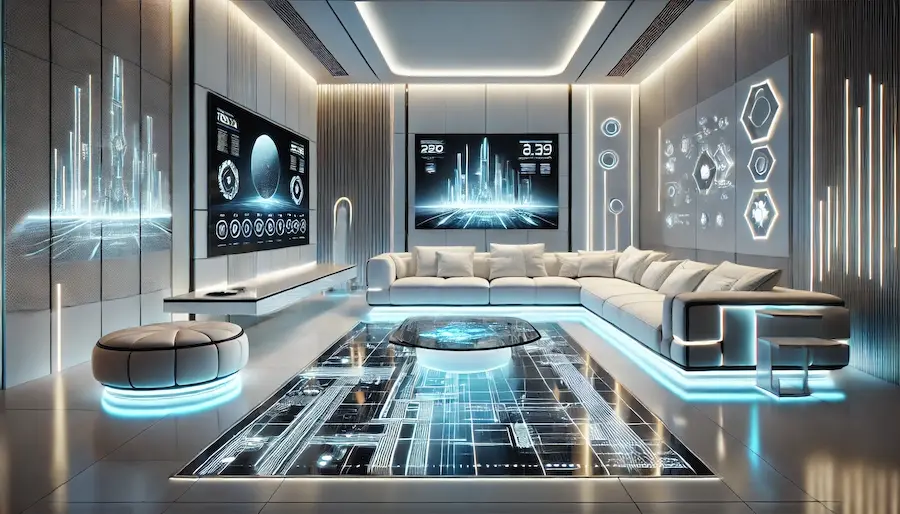A futuristic living room embodies cutting-edge design and technology, creating a sleek, innovative space that reflects the advancements of tomorrow.
History and Origins of Futuristic Design
Futuristic design emerged in the early 20th century, influenced by the Futurism art movement, which emphasized speed, technology, and modernity. This aesthetic has evolved to incorporate contemporary technological innovations and minimalist principles, resulting in interiors that prioritize functionality, clean lines, and advanced materials.
Key Features of a Futuristic Living Room
- Minimalist Furniture: Opt for sleek designs with clean lines and smooth surfaces to create a contemporary feel. Multi-functional pieces, like sofas that convert into beds or coffee tables with hidden storage, are perfect for maximizing space and utility.
- Advanced Technology Integration: Incorporate smart home devices, touch control panels, and AI-driven systems to enhance convenience and create an interactive environment.
- Innovative Lighting: Utilize dynamic lighting solutions, such as LED strips that illuminate your walls or sculptural light fixtures that act as art pieces, to create an atmosphere that feels both modern and inviting.
- Bold Color Schemes: Implement vibrant accents or monochromatic palettes with pops of color to add visual interest and a futuristic vibe. Think electric blue, vibrant pink, or neon green used sparingly to highlight features or create focal points.
- Sustainable Materials: Incorporate eco-friendly and recyclable materials to reflect a commitment to sustainability, a key consideration in modern futuristic design.
Applications of Futuristic Design in Living Rooms
- Smart Furniture: Invest in furniture that adapts to your needs, such as modular sofas or adjustable coffee tables, to enhance functionality and comfort.
- Immersive Entertainment Systems: Integrate advanced audio-visual setups, including large screens and surround sound, to create an engaging entertainment experience.
- Virtual Reality Integration: Consider incorporating VR technology for gaming or virtual tours, adding an innovative dimension to your living space.
Considerations When Designing a Futuristic Living Room
- Functionality: Ensure that technological integrations and design elements enhance usability and do not compromise comfort or practicality.
- Aesthetic Balance: While embracing advanced designs, maintain a cohesive look by balancing bold elements with neutral tones and minimalist decor.
- Personalization: Incorporate elements that reflect your personal style to prevent the space from feeling impersonal or overly sterile.
Conclusion
Designing a futuristic living room involves blending advanced technology, innovative materials, and minimalist aesthetics to create a space that is both functional and forward-thinking. By focusing on key features such as smart furniture, dynamic lighting, and sustainable materials, you can craft a living area that embodies the essence of future living.
